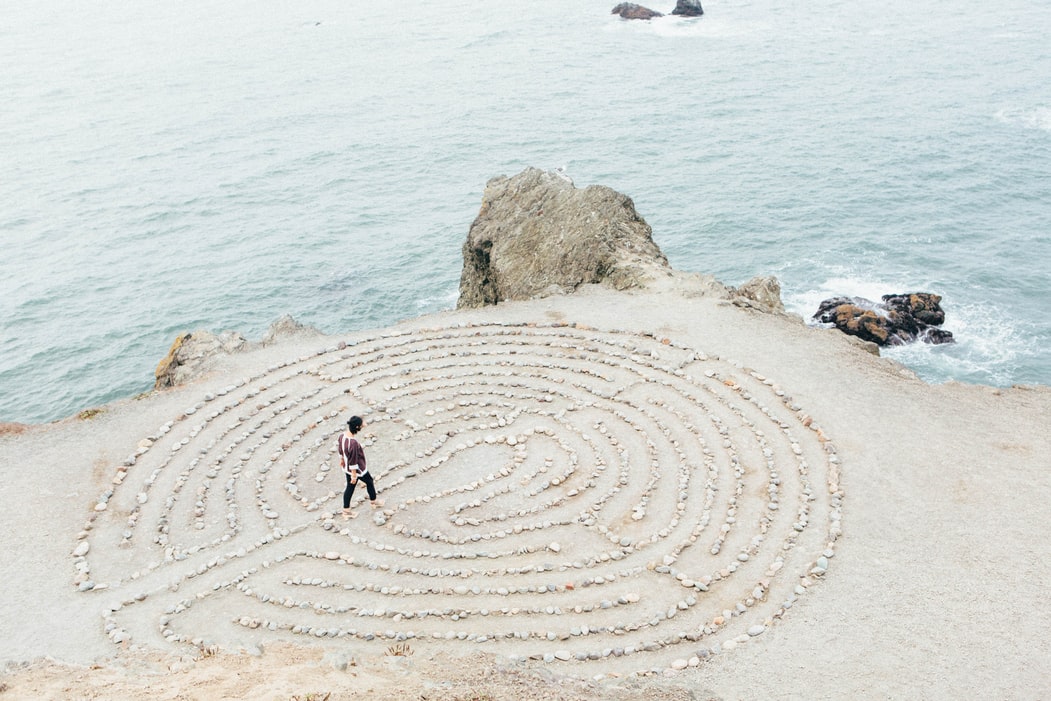I ’ve always loved a good walk. Through the woods, down a busy city sidewalk, along a beach, or strolling through my own neighborhood, walking has been a place of peace for me. I would often talk on the phone, listen to a book or some music, or chat with a walking buddy. But when COVID-19 lockdowns started in March 2020, I changed my walks from casual strolls to prayer walks. I needed a quiet space to connect with God, away from the stress of our household chores, kids needing attention, and work meetings on Zoom.
At first I didn’t think about my prayer walks being a part of my spiritual practice and personal discipleship. In my mind, prayer walks were something I had done in order to pray for my neighborhood, asking God to bring community needs to my attention so that I could pray and act in accordance with the Spirit. But the more I thought about what I was doing, the more I realized that there are several types of prayer walks.
Neighborhood prayer walks allow you to listen for the Spirit about how to pray for and connect with your community. Labyrinth walks provide a pathway for you to focus on a specific prayer or spiritual question. Personal prayer walks, like the ones I started in March, give you space to connect with God internally and externally.
On a personal prayer walk, you can walk in silence, observing the scenery around you. You can pray for people and situations that are on your mind. You can talk things out with God, sharing your thoughts and emotions and leaving space for the Spirit to respond. You can give thanks for the blessings in your life.
Prayer walks can be a part of your personal discipleship, allowing you to grow your relationship with God, pray for others in your community, and experience the beauty of God in creation. You can take prayer walks wherever you are. You don’t have to take the same path again and again. You can hike trails, stroll sidewalks, even walk the rows of your garden or farm fields. Your prayer walk can be as long or as short as your desire, time, and physical stamina allow. You don’t have to walk for miles or walk fast. In fact, if you are a fast walker, it can be helpful to slow your normal pace slightly.
Because prayer walks involve moving your body, they are perfect for people who have trouble sitting still, who have a lot of energy, or who need to be moving to think well. Engaging your whole body in your prayer can really help you to focus. But, you shouldn’t confuse your prayer walk with your daily exercise regimen. It’s a great way to engage in movement, but the focus shouldn’t be on hitting milestones, losing weight, or anything other than taking the space you need to connect with God.
Prayer walking is a great spiritual practice for new believers and for those of us who have been following Jesus for years. Intentionally making space for God in your day is important for all of us. So wherever you are, however much time you have, find some space to step away from all the other needs and tasks of the day, and take a walk with God.
Try a virtual prayer walk
If weather, physical limitations, or other conditions prevent you from stepping outside, try a virtual prayer walk. Use Google Earth to pray for your neighborhood, another community, or even a ministry on the other side of the world! The Reformed Church in America’s Short-Term Mission team and their partners found virtual prayer walks to be a great way to connect with mission partners. They’ve even provided a guide for building your own virtual prayer walk.

Stephanie Soderstrom
Stephanie Soderstrom is coordinator for Short-term Mission for the Reformed Church in America. You can connect with her by email at ssoderstrom@rca.org.



